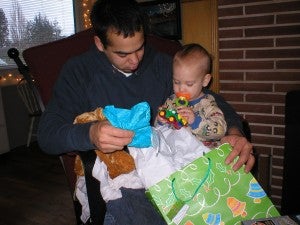How To Infant-Proof Your Home
A new baby in the home means many new concerns for parents, chief of which is the baby’s health and protection. While a baby too young to crawl or walk poses no potential hazard to himself or others, as the baby grows into an infant who can crawl or walk, the potential for injuries to himself increases almost exponentially. Dangers from objects we take for granted that are found in the home become apparent as the baby grows older. So, the need for increased security arises. Survey your home and take these steps to ensure the protection and safety of your youngster.
Stairs
- Install a stairwell gate at the bottom and top of any staircases in your home. Remember, a child left alone upstairs can easily fall downstairs even though there is a security gate at the bottom. Both are mandatory.
- Make certain the stairwell gate has a secure latch at the top of the gate so the child cannot reach it. Don’t ever take for granted that the child cannot operate a latch. They may surprise you.
Kitchen cupboards
- Install an infant latch on each cupboard door and drawer. The latch should be installed at the top edge of the cupboard or cabinet door and hold the door nearly shut so the child cannot reach inside.
- Always place latches on drawers, especially those drawers that contain knives or silverware.
Bathrooms
- Keep all cleaning and personal care chemicals out of bathroom cabinets. Install cabinet child-proof latches on bathroom cabinet doors, drawers and medicine chests. Even though a medicine chest may be mounted on the wall, the door to it should be secured because many children learn how to climb even before they can walk.
- Make sure toilet cleaning chemicals, plungers and toilet brushes are put away where children cannot get to them.
- Verify that all medications are also kept inside secured cupboards or drawers or at least kept high out of a child’s reach.
Bedrooms
- Make sure you keep perfumes, fingernail polishes and removers and personal care items off dressers and the top of chest of drawers. They should be put in lockable cases or in secured drawers or cabinets.
Living rooms
- If possible, keep a secured gate between the living room and other rooms in the house in order to limit a child’s ability to travel from room to room unsupervised.
Pantry/utility room
- Pay attention to chemicals and cooking ingredients.
- Place laundry detergents, bleaches and cleaning supplies well above a child’s reach and, ideally, under lock and key or in secured cabinets or drawers.
Tips
- Everyday items that are innocuous to you and me pose a hazard to children. Plastic bags should be ripped or torn open and immediately recycled or thrown away. Rags that have been used for cleaning, painting or wiping up spills, likewise, should be disposed of properly.
- Wipe up spills as soon as they occur. Clean up pet waste immediately, as well.
- Immediately place cloth diapers in a diaper pail with a lid that latches shut.
- Throw away disposable diapers as soon as you remove them from your child.
- Feed pets outside or in an area not immediately accessible to your child. Dispose of any pet food your pet has left uneaten.
- Do not take anything for granted where your child’s safety and health are concerned.
Discuss this and other Home Improvement Topics in our How To Forum





